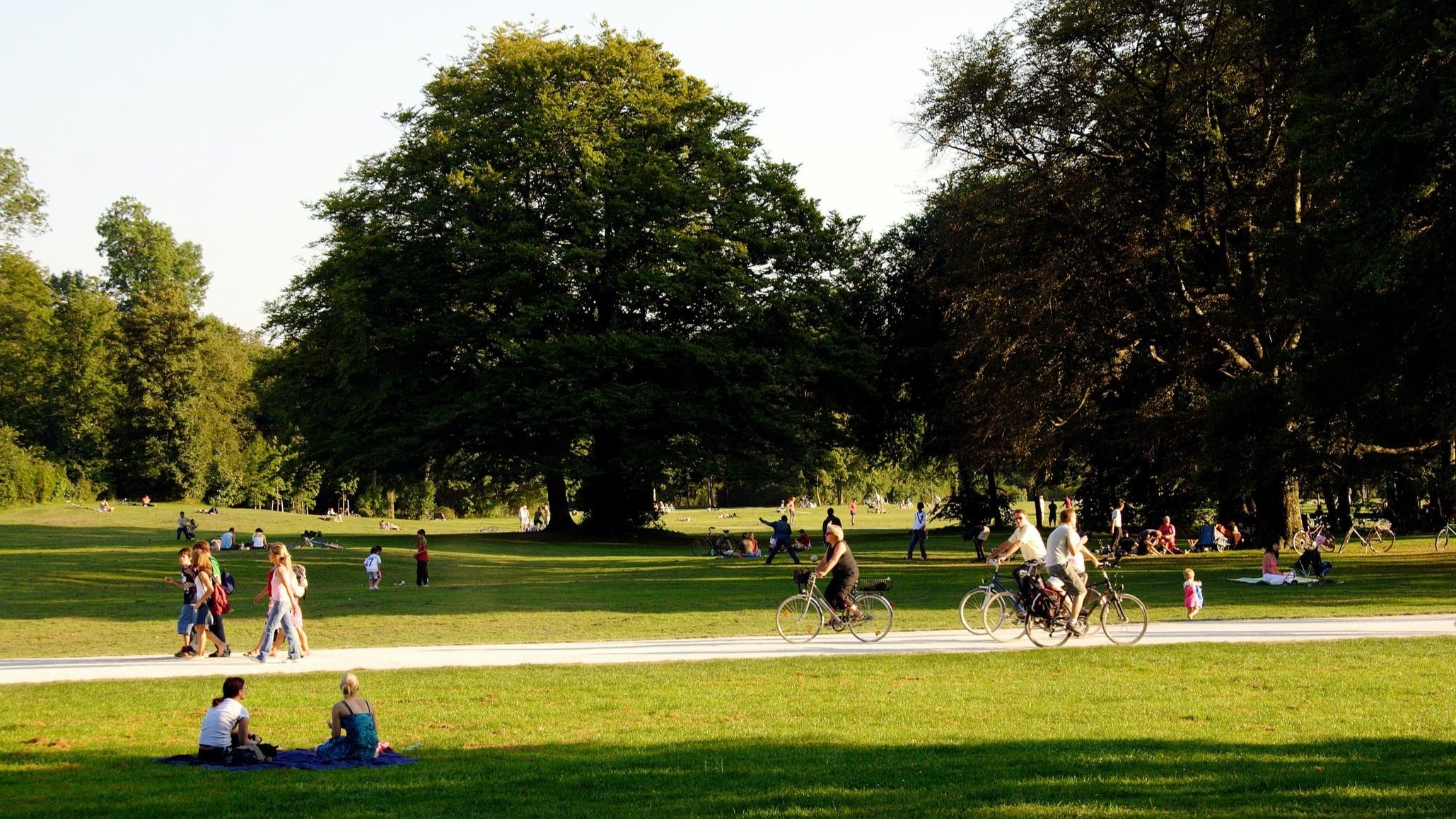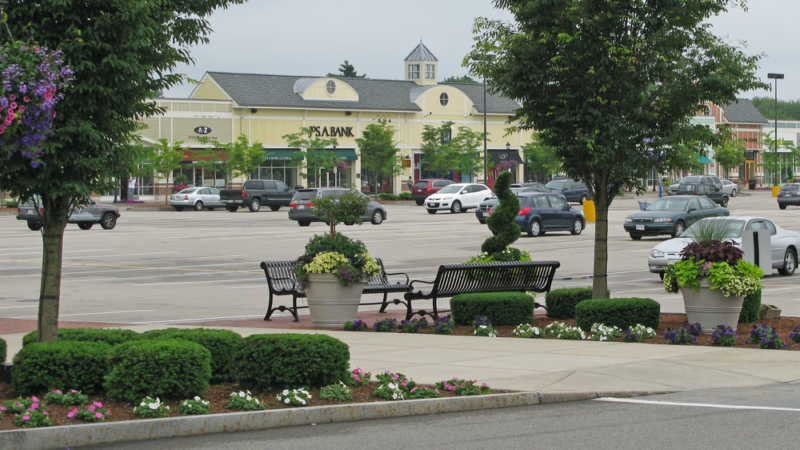It’s no secret that much of our outdoor world is given over to non-places, such as fast-moving roads or the parking, stormwater, and landscaping buffers they require. These are locations where no one is meant to linger, relax, or in some cases even walk through.
This article was written by Daniel Herriges and originally published by Strong Towns.
Yet, another puzzling feature of the modern city is how many public spaces are designed, ostensibly, for humans to gather, and still end up awkward, unlovable, and underused. We’ve all wandered through bad, lifeless parks and plazas. We’ve all seen oddly placed benches and thought, “Why would anyone sit there?” Or been dismayed by overcomplicated designs that don’t leave room for the natural, spontaneous flow of human activity.
From a design standpoint, these spaces tend to be both overthought and underthought. Certain costly or quirky design features will make it obvious that planning went into the space, that a hired consultant was probably involved, that a survey was sent out. And yet the end product underwhelms, in ways that it seems should have been anticipated.
I say “should have been anticipated” because this isn’t rocket science. There are thousands of really terrific public spaces around the world, in existence right now. Places that are loved, that are deeply comfortable and inviting, and that are always buzzing with activity. Most of them have basic designs that could be ported to a different city, region, or even a totally different climate (adjusting for, say, the exact species of trees or shrubs).
So why don’t we just study those spaces and then, you know…do that?
The Value of Learning by Imitation
I moonlight as a private tutor for standardized test takers. I’ve been doing it for over a decade. I know these tests inside and out, but as a tutor, the most frustrating part to teach has always been the essay component, for those tests that have one. Unlike multiple-choice questions about math or grammar, the knowledge required to do well on an essay assignment isn’t discrete and easily catalogued. There’s much more ambiguity involved in identifying where a student is falling short and what they should work on.
I’ve tried two basic approaches to helping students bring their essay scores up:
-
Using the grading rubric the testing companies provide as a starting point, as well as rules I was taught in school, I try to distill a list of principles and tips for writing an essay that will receive a top score. I teach my students those principles and give them assignments to reinforce them.
-
I give my students a collection of essays that received perfect scores. I say, “Read all of these, and then try to write like this.”
Any guesses which teaching method yields more improvement in their writing? Yep, it’s number 2. Every time.
There are analogues to this across many, many skill sets. Every writer worth their salt has favorite writers to read. Every visual or musical artist borrows liberally from their inspirations. Heck, most of the best home cooks do not rely much, if at all, on recipes—but almost all of them at first learned by watching and then imitating someone more experienced. It’s simply the most effective way to get good. By far.
And the same is true of urban design. I submit that a planner or designer with impeccable formal/theoretical training and out-of-the-box creativity is less valuable, all things considered, than one with intimate knowledge of existing great places that just work and the ability to copy them.
Ditch the (Unproductive) Consultation Fetish
I think part of what drives overthought, underperforming placemaking in so many modern cities is our obsession with the wrong kind of public engagement process. I’m watching this unfold right now as my city plans a new urban park for a rapidly growing neighborhood—the kind of dense, walkable one that really needs a central gathering space. I did the survey the consultant sent out, and was asked to rank from lists of priorities and concepts. Some of it was intuitive. (“How important is shade to you? Places to sit? A grassy lawn?”) Some of it was less so: We were asked to rank the appeal of proposed features like “sculptural mounds,” a “waterwall,” and an area with playable games like cornhole.
In the free-response section, I ended up writing that my biggest fear is that the space will end up overprogrammed—that is, cluttered with features that serve only one purpose and detract from the park’s function for everyone not interested in that purpose. I said I think it’s more important that it be a comfortable place to linger for all sorts of people and purposes, and not presuppose how the public will want to use the space. Let it evolve over time, too.
But honestly, what I would really do if it were up to me is find a few examples of A+ parks in neighborhoods like this one—measurably A+, in that they’re popular and well used—and treat them as starting points. That doesn’t mean you can’t, from that point, incorporate identified local needs and desires, or that you shouldn’t do local public engagement. If anything, you should do more meaningful and less rote forms of it. (A good engagement process likely isn’t going to lead with, “Hey kids, how do you like the cool waterwall we thought up!”)
Overprogramming of public space happens as the result of a process like the survey I completed, in which the planners are incentivized to both a) demonstrate that they responded to public feedback, and b) prove they’ve earned their consulting fee by doing something ostensibly innovative or original.
Folks, it’s a park on a street corner. Humans have had centuries to master that. Don’t reinvent the wheel.

(Source: Unsplash.)
The Proper Place for Rules: Descriptive, Not Rigidly Prescriptive
Knowing something “works” is an almost entirely intuitive process. But once you do know something works—that it’s beautiful, or effective—it is a worthwhile exercise to dissect why it works.
By analogy, there is absolutely nothing wrong with studying music theory, and it has made many people better musicians and songwriters. But it’s best to go into it as a means of reverse engineering what you already know sounds beautiful to better understand how, technically, to replicate it. If you try to deduce from first principles what ought to sound beautiful, you won’t get far.
In urban design, the equivalent process results in interesting rules like terminating vistas, thigmotaxis, or even something like the Gehl Door Average. None of these are laws of physics; they are good guidelines borne out by experience. They are rules that tend to be true, and once you know them well, you will also know when you can get away with breaking them.
A Way to Create Serviceable Places
There’s another way in which my tutoring analogy is relevant: Standardized test essays are never, ever great writing. Shakespeare himself couldn’t pull off great writing in the confines of these banal, time-limited assignments. When you learn to master these essay assignments, what you’re learning to do is produce lucid, straightforward writing that makes a coherent point, and to do it efficiently.
When you copy vernacular design traditions, you learn how to create perfectly serviceable places that contribute to a coherent, highly pleasant city. None may win an award. Our “starchitecture”-addled design culture often disdains this quotidian approach, because its value system is based on innovation and uniqueness.
But for a city, the goal should be first and foremost to not create bad places. And the good news is, if we humble ourselves to recognize this, there are so many good places out there to copy that we really have no excuse.





